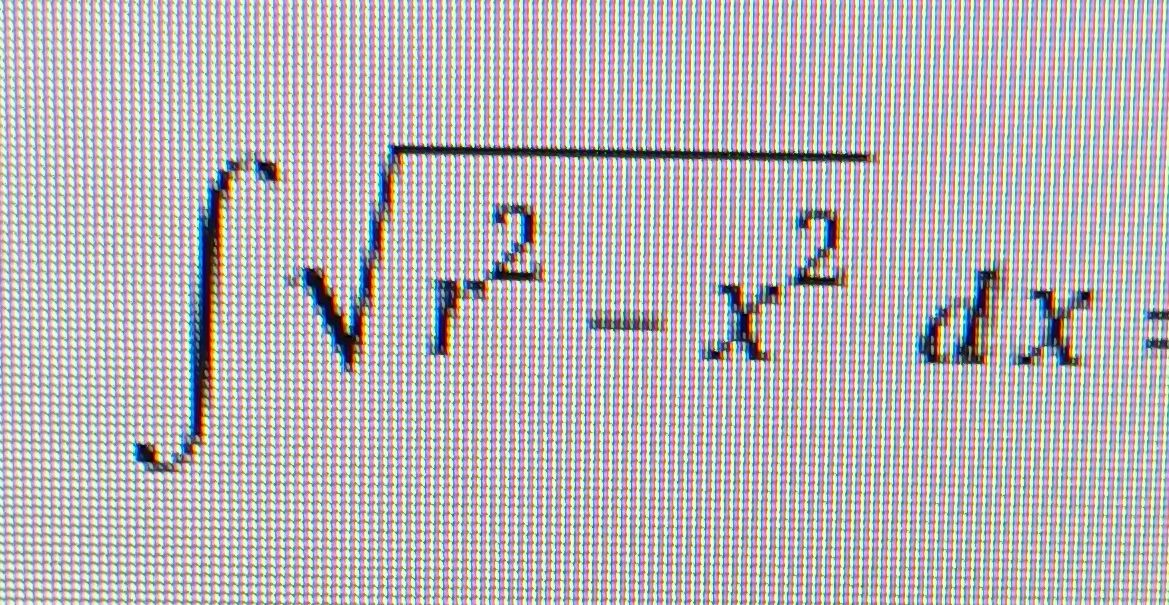AI tutor
Full solution
Q.
- Recognize Trigonometric Substitution: To solve the integral , we recognize that this is a standard integral that can be solved using a trigonometric substitution. Specifically, we can let , which implies . This substitution will simplify the square root expression.
- Substitute into Integral: We substitute into the integral, which gives us . Simplifying the expression under the square root gives us .
- Simplify Square Root Expression: We know that , so . Substituting this into the integral, we get , which simplifies to .
- Integrate : Now we need to integrate with respect to . This can be done by using the half-angle identity for cosine, which states that . Substituting this into the integral, we get .
- Split Integral into Two Parts: We can split the integral into two parts: . This simplifies the integration process.
- Use u-Substitution for : Integrating the first part, , gives us . For the second part, , we can use a u-substitution where and , which gives us .
- Combine Results of Integrals: The integral of with respect to is , so we get . Substituting back for , we have .
- Substitute back for : Combining the results from the two parts of the integral, we have , where is the constant of integration.
- Find using Inverse Sine: We now need to substitute back for using our original substitution . To find , we take the inverse sine of both sides, giving us .
- Substitute into Result: Substituting into our result, we get .
- Simplify : To simplify , we use the identity . Since , we need to find . From the Pythagorean identity, we know that .
- Finalize the Answer: Substituting and into , we get .
- Finalize the Answer: Substituting and into , we get . Finally, we substitute back into our integral result to get the final answer: $\left(\frac{r^\(2\)}{\(2\)}\right)\arcsin\left(\frac{x}{r}\right) + \left(\frac{r^\(2\)}{\(4\)}\right)\left(\(2\)\left(\frac{x}{r}\right)\sqrt{\(1\) - \left(\frac{x}{r}\right)^\(2\)}\right) + C.
- Finalize the Answer: Substituting \(\sin(\theta) = \frac{x}{r}\) and \(\cos(\theta) = \sqrt{1 - \left(\frac{x}{r}\right)^2}\) into \(\sin(2\theta)\), we get \(\sin(2\arcsin(\frac{x}{r})) = 2\left(\frac{x}{r}\right)\sqrt{1 - \left(\frac{x}{r}\right)^2}\). Finally, we substitute \(\sin(2\arcsin(\frac{x}{r}))\) back into our integral result to get the final answer: \(\left(\frac{r^2}{2}\right)\arcsin(\frac{x}{r}) + \left(\frac{r^2}{4}\right)\left(2\left(\frac{x}{r}\right)\sqrt{1 - \left(\frac{x}{r}\right)^2}\right) + C\). Simplifying the expression, we get \(\left(\frac{r^2}{2}\right)\arcsin(\frac{x}{r}) + \left(\frac{r^2}{2}\right)\left(\frac{x}{r}\right)\sqrt{1 - \left(\frac{x}{r}\right)^2} + C\) as the final answer.
More problems from Csc, sec, and cot of special angles
QuestionGet tutor help
QuestionGet tutor help
QuestionGet tutor help
QuestionGet tutor help
QuestionGet tutor help
QuestionGet tutor help
Question
. Find the value of in degrees.Write your answer in simplified, rationalized form. Do not round.____
Get tutor helpQuestionGet tutor help



